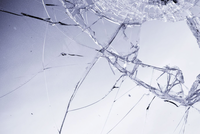
Lead Image © joseasreyes, 123RF.com
Disaster recovery for Windows servers
Window Repairs
When a server fails to start, you need a carefully considered but fast response. Experts have some quick and easy ways to put Windows servers back on their feet, but some of these powerful techniques could render your system completely useless if you don't get them right. Generally, you should prepare for the worst case in a test environment. Admins who are familiar with the various possibilities can restore a server quickly in an emergency.
In this article, I show you how to fix problems with Windows if the operating system will not boot. The instructions have been tested with Windows Server 2012 R2, but most settings also work in previous versions and with Windows 7/8. You will learn how to restore entire servers and repair virtualized environments based on Windows, as well as how to get special services, such as Active Directory, running again.
Boot Manager Failure
If a server fails to boot, the cause can be a defective boot manager. You can repair it by booting from a Windows Server DVD and calling up the computer repair options. At the command line, you have various options for reactivating a defective boot manager.
The bootrec /fixmbr command overwrites the master boot record at the beginning of the disk, whereas bootrec /scanos lets you view the operating systems that are not currently listed in the boot manager. The bootrec /rebuildbcd command reinstates the systems found in the boot manager, and bootrec /fixboot creates the bootmgr boot manager again.
Further commands for repairing the boot manager are bootsect /nt60 SYS and bootsect /nt60 ALL. You can enter the commands in this section one after another at the command line. Of course, this is only useful if the boot manager has stopped working. If the server starts to boot but then cancels, the boot manager is not defective; the
Buy this article as PDF
(incl. VAT)
Buy ADMIN Magazine
Subscribe to our ADMIN Newsletters
Subscribe to our Linux Newsletters
Find Linux and Open Source Jobs
Most Popular
Support Our Work
ADMIN content is made possible with support from readers like you. Please consider contributing when you've found an article to be beneficial.







